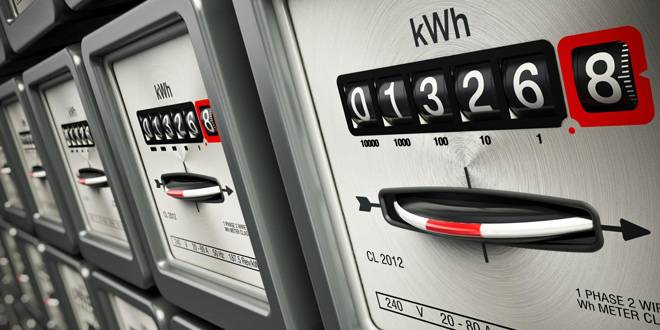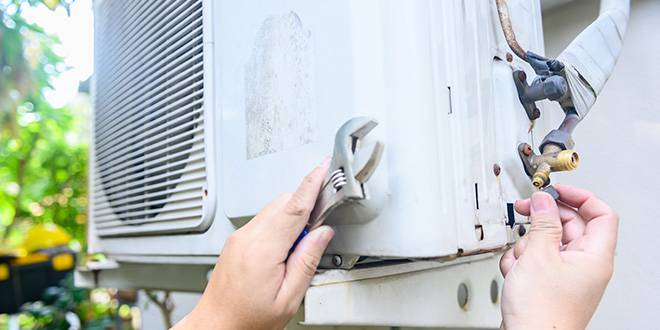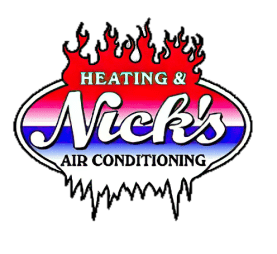
Understanding the energy consumption of HVAC (Heating, Ventilation, and Air Conditioning) systems is crucial for homeowners and business operators alike. These systems are fundamental in providing comfort and maintaining indoor air quality throughout the year. However, they also represent a significant portion of energy expenses for both residential and commercial properties.
This article explores the various factors that influence how much energy an HVAC system uses, including system types, efficiency ratings, and operational habits. We’ll also offer practical advice on how to minimize energy consumption without compromising comfort. Whether you’re looking to install a new HVAC system or optimize the efficiency of an existing one, gaining insight into energy use is a step toward more sustainable living and cost savings.
Understanding HVAC Systems

HVAC systems are an integral part of residential and commercial buildings, ensuring a comfortable indoor climate regardless of the weather outside. These systems not only regulate temperature but also manage indoor air quality and humidity levels. Given the diverse climate conditions across different regions, HVAC systems have become indispensable in daily life. This section delves into the various components of HVAC systems, the different types available, and their typical applications.
Components of HVAC Systems
An HVAC system is composed of several key components that work together to heat, cool, and ventilate a space:
- Thermostat: The control unit that sets the desired temperature and regulates the operation of the HVAC system.
- Furnace: The unit responsible for heating air, which is then distributed throughout the building.
- Air Conditioner: Works by removing heat and humidity from indoor air to cool down the space.
- Ductwork: The network of ducts that circulates air throughout the building, delivering heated or cooled air to various rooms.
- Vents: The outlets that supply heated or cooled air from the ductwork to the indoor spaces.
Air Filters: These filters clean the air that circulates through the system, removing dust, pollen, and other particulates.
Types of HVAC Systems
There are various types of HVAC systems designed to meet the specific needs of residential and commercial buildings:
- Central Air Conditioning Systems: These are the most common systems in residential settings, consisting of an outdoor unit (compressor/condenser) and an indoor unit (air handler). Central air conditioners are efficient for cooling multiple rooms but require ductwork.
- Heat Pumps: Serving dual purposes, heat pumps can heat and cool a building. During warmer months, they function like an air conditioner; in cooler months, they reverse the process to heat the building.
- Furnaces: Available in electric, gas, and oil models, furnaces are widely used for heating. They heat air and distribute it throughout the building via ductwork or pipes.
- Ductless Mini-Split Systems: Ideal for spaces without ductwork, these systems consist of an outdoor compressor/condenser and one or more indoor air handling units. Mini-split air conditioners are perfect for heating and cooling individual rooms.
- Ventilation Systems: These systems are designed to exchange indoor and outdoor air, removing contaminants and regulating humidity levels to improve indoor air quality.
- Window Air Conditioners: These are compact units designed to fit within the frame of a window. A window air conditioner is a self-contained systems, ideal for cooling single rooms. Their installation and maintenance are straightforward, making them a convenient option for immediate cooling needs without the requirement for ductwork.
- Portable Air Conditioners: As the name suggests, a portable air conditioner is can be easily moved from one room to another, providing flexibility in cooling different areas as needed. They work by drawing in warm room air, cooling it, and then circulating the cooled air back into the room while expelling the heat outside through a window vent kit. Portable air conditioners are suitable for situations where traditional cooling methods are impractical or too costly to install.
Residential vs. Commercial Applications
The choice of an HVAC system largely depends on the application. Residential systems are typically smaller and designed to be more energy-efficient for daily use in homes. Commercial HVAC systems, on the other hand, are larger, more complex, and designed to handle the demands of business operations, including larger spaces, more occupants, and specific industrial requirements.
In conclusion, understanding the different types of HVAC systems and their components is the first step in recognizing how much energy your system might use. This knowledge not only helps in making informed decisions about installations and upgrades but also in identifying ways to enhance efficiency and reduce costs.
How Much Electricity Does an HVAC System Need?: Influencing Factors
The energy consumption of heating and air conditioning units can vary widely, influenced by several key factors. Understanding these elements can help in identifying strategies to reduce energy use while maintaining comfort levels within your space. This section explores the primary factors that affect HVAC energy consumption, including system size and efficiency, climate, building insulation, and usage patterns.
System Size and Electricity Usage
- Size: The capacity of an HVAC system should be carefully matched to the size of the space it needs to condition. An oversized system can lead to unnecessary energy consumption and frequent cycling on and off, which can wear down components more quickly. Conversely, an undersized system may run continuously, struggling to reach the desired temperature, leading to excessive energy use.
- Efficiency: The efficiency of an HVAC system is indicated by its SEER (Seasonal Energy Efficiency Ratio) for cooling and AFUE (Annual Fuel Utilization Efficiency) for heating. Modern systems are available with higher efficiency ratings, consuming less energy to achieve the same level of temperature control as older, less efficient models.
Climate
The geographic location of a building significantly influences HVAC energy use. Buildings in areas with extreme temperatures, whether hot or cold, will require more energy to maintain comfortable indoor conditions. Conversely, locations with milder climates may see significantly lower HVAC energy consumption.
Building Insulation and Sealing
- Insulation: Proper insulation helps maintain indoor temperatures by reducing heat loss in winter and heat gain in summer. Well-insulated buildings require less energy to heat and cool, directly impacting HVAC system efficiency.
- Sealing: Air leaks through doors, windows, and other openings can undermine HVAC efficiency. Ensuring that a building is properly sealed against external air intrusion can significantly reduce energy consumption.
Usage Patterns
- Thermostat Settings: The setting on the thermostat plays a crucial role in energy consumption. Opting for slightly higher temperatures in summer and lower in winter can reduce the workload on HVAC systems.
- Occupancy and Activity Levels: The number of people in a space and their activities can affect HVAC energy use. Higher occupancy or activities that generate heat will require more from the HVAC system to maintain comfort levels.
Optimizing for Efficiency
Understanding these factors provides a foundation for optimizing HVAC system performance and energy efficiency. Simple adjustments, such as improving insulation, adjusting thermostat settings, and ensuring regular maintenance, can lead to significant energy savings. Additionally, when considering new installations or replacements, opting for high-efficiency models and correctly sizing the system can offer long-term benefits in reduced energy consumption and lower utility bills.
By addressing these key factors, homeowners and businesses can achieve a comfortable indoor environment in a more energy-efficient and cost-effective manner. Next, we will explore the average energy use of different HVAC systems and how specific systems can be optimized for better energy efficiency.
Average Energy Use of HVAC Systems
Understanding the average energy consumption of a typical air conditioner or heater is crucial for homeowners and businesses looking to manage utility costs and environmental impact. This section breaks down the energy use by system type, offering insight into what one might expect in terms of energy usage under typical operating conditions. It also provides a comparative analysis of how energy consumption can vary in different climates and settings.
Central Air Conditioning
Central air conditioning systems, one of the most common types of HVAC systems in residential settings, have significant variations in energy use based on size, efficiency, and operating hours. On average, a central air conditioner can use between 3,000 to 5,000 watts per hour during operation. The total energy consumption depends on the climate, with systems in hotter regions operating more frequently and consuming more energy.
Heat Pumps
Heat pumps are unique in that they can provide both heating and cooling, making them an all-in-one solution for year-round comfort. When cooling, a heat pump’s energy use is comparable to that of central air conditioning systems. However, their efficiency becomes particularly noticeable in heating mode, where they consume less energy than traditional electric heaters by transferring heat rather than generating it. This efficiency is measured by the HSPF (Heating Seasonal Performance Factor) rating.
Furnaces
The energy use of furnaces depends on their fuel source (natural gas, oil, or electricity) and efficiency. Gas furnaces, for example, are measured by their AFUE rating, with higher ratings indicating better efficiency. An average furnace might consume between 600 to 1,200 watts of electricity for operation, not including the energy content of the gas or oil being burned. Electric furnaces, on the other hand, can consume a significant amount of electricity, especially in colder climates.
Ductless Mini-Split Systems
Ductless mini-split systems are highly efficient for both heating and cooling specific areas or rooms within a building. Their energy consumption is generally lower than central systems, partly because they avoid ductwork where heat loss and gain can occur. These systems can range from consuming 600 to 1,500 watts per hour, depending on the model and setting.
Climate Impact on Energy Use
The climate where the HVAC system operates plays a crucial role in determining its energy use. Systems in regions with extreme weather conditions—be it hot or cold—will inevitably consume more energy to maintain comfortable indoor temperatures. Conversely, milder climates allow for more moderate use of HVAC systems, resulting in lower energy consumption.
Energy Consumption in Different Settings
Residential and commercial settings have differing energy needs. Commercial buildings, due to their size and the number of occupants, typically have higher energy consumption compared to residential homes. However, commercial systems may also be more complex and potentially more efficient in distributing and regulating air, impacting overall energy use.
In conclusion, the average energy use of an HVAC system varies widely based on the type of system, its efficiency, the climate, and the specific application (residential vs. commercial). By understanding these factors, individuals and businesses can make informed decisions about selecting and operating HVAC systems to balance comfort with energy efficiency. The next section will discuss strategies for improving HVAC energy efficiency, providing actionable tips for reducing energy consumption.
Improving HVAC Energy Efficiency

Enhancing the energy efficiency of HVAC systems is key to reducing energy consumption, lowering utility bills, and minimizing environmental impact. This section outlines practical strategies for homeowners and businesses to optimize the performance of their HVAC systems, ensuring they operate as efficiently as possible.
Regular Maintenance
Regular maintenance is crucial for keeping an HVAC system running efficiently. This includes:
- Changing Air Filters: Dirty air filters restrict airflow, forcing the system to work harder and use more energy. Filters should be checked monthly and changed at least every three months.
- Annual Inspections: Professional servicing can identify and fix issues such as leaky ductwork, inefficient components, and refrigerant levels that are not optimal, all of which can impact system efficiency.
Upgrading to High-Efficiency Systems
When it’s time to replace an HVAC system, consider upgrading to a high-efficiency model. Look for:
- High SEER and AFUE Ratings: Choose systems with higher SEER ratings for cooling and higher AFUE ratings for heating to ensure lower energy consumption.
- ENERGY STAR® Certified: Appliances with the ENERGY STAR® label meet strict energy efficiency guidelines set by the U.S. Environmental Protection Agency.
Optimizing Thermostat Settings
Smart thermostat use can significantly impact HVAC energy consumption:
- Adjust for Seasons: Setting your thermostat to 78°F (26°C) in summer and 68°F (20°C) in winter can provide comfort while minimizing energy use.
- Use Programmable Thermostats: These allow you to set your HVAC system to operate only when needed, such as lowering heating or cooling when the building is unoccupied.
Improving Home Insulation and Sealing
Enhancing the building’s insulation and sealing leaks can reduce energy waste:
- Insulate Attics, Walls, and Floors: Proper insulation helps keep warm air out in the summer and during the winter.
- Seal Windows and Doors: Caulking or weather-stripping can prevent warm or cool air from escaping, reducing the demand on your HVAC system.
Utilizing Energy-Efficient Building Designs
For new construction or major renovations, consider:
- Passive Solar Design: Utilizing the sun’s energy for heating and lighting can reduce reliance on HVAC systems.
- Energy-Efficient Windows: Installing double-pane or Low-E windows can help control heat transfer, maintaining indoor temperatures with less energy.
Adopting Renewable Energy Sources
Incorporating renewable energy sources, such as solar panels, can offset some of the energy consumption of HVAC systems, leading to greater efficiency and sustainability.
Conclusion
By implementing these strategies, individuals and businesses can significantly improve the energy efficiency of their HVAC systems. Regular maintenance, upgrading to high-efficiency models, optimizing thermostat settings, improving insulation, and considering renewable energy sources are all effective ways to reduce energy consumption and environmental impact. Taking proactive steps towards energy efficiency not only contributes to a more sustainable future but also offers substantial savings on energy bills.
Ready to Optimize Your Comfort?
Take the first step towards a more efficient home or business with Nick’s Heating & Air Conditioning. Let us help you achieve optimal HVAC efficiency and savings. 🌱💡🔧 Whether upgrading your system or seeking maintenance advice, our experts are here to guide you. Contact us today—your journey to energy savings starts now!



